review: SF Opera’s “Magic Flute”—ingenious animation invigorates a beloved classic

It’s all about dazzling rapidly moving images in the mesmerizing production of “The Magic Flute” at San Francisco Opera which I attended Friday and thoroughly enjoyed. Inspired by early animation, silent film, characters of the late silent era, and foreboding 1920’s German Expressionist visuals, this production which originated at Berlin’s Komische Opera, offers an entirely refreshing take on Mozart’s beloved story. It’s as much cinematic as operatic.
This 2012 production is a co-creation of Berlin director Barrie Kosky with writer and performer Suzanne Andrade and animator and illustrator Paul Barritt, the two founders and artistic directors of the London-based theater company 1927. It is directed in San Francisco by Tobias Ribitski. 1927 is known for ground breaking productions that merge live performance with music and animation and look to the silent film era for inspiration. Normally, the singing and Mozart’s music are front and center ─those sparkling arias, glorious ensembles, and breathtaking orchestral passages. They are still there but not clearly the main attraction. The visual allure of seamless non-stop interaction between on stage performers and projected hand-drawn animation is quite breathtaking. Adding to the novelty is is that the delightful animation is built around both popular and obscure silent film plot references.
The main characters suggest stars of the late silent era. Pamina has the short “Lulu” bob hairdo of flapper-era star Louise Brooks who was bewitching to audiences, especially in “Pandora’s Box” (1929), the pinnacle of German expressionism and one of the great films of all time. Papageno, the birdcatcher, is pure Buster Keaton. Sinister Monostatos echoes Nosferatu. They wear Chaplin-style white facial makeup and have darkened eyes and lips to help define facial features and expressions to standout from the projections.
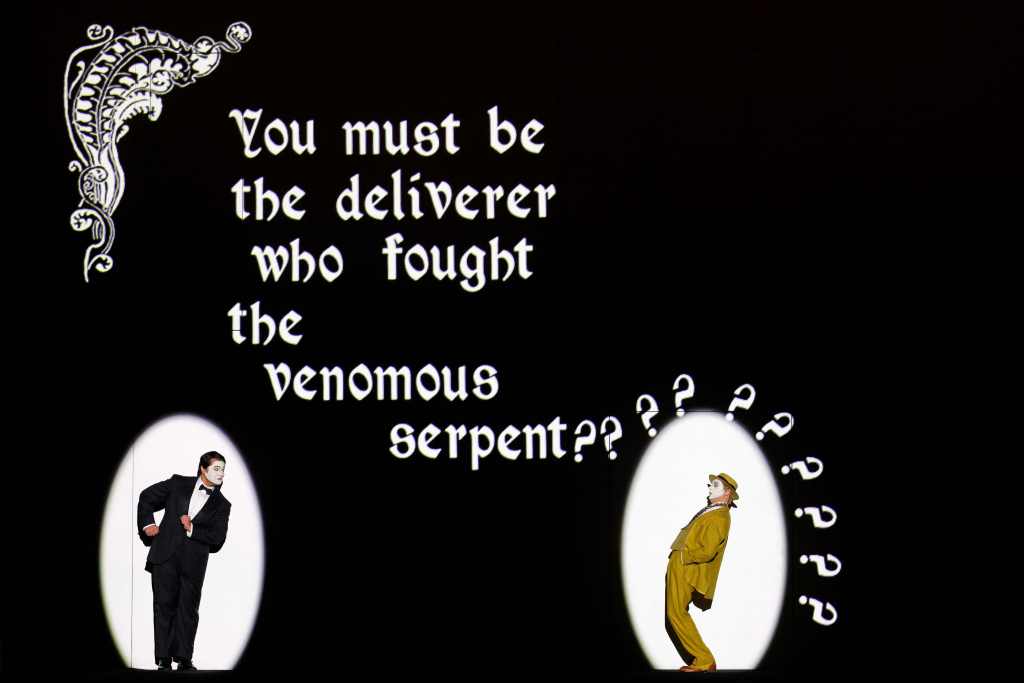
While Emmanuel Schikaneder’s libretto is in German with a lot of spoken dialogue, the team from 1927 cut out the spoken dialog but retained the singing in German. In keeping with the staging’s inspirations from 1920’s cinema, some of the opera’s texts are projected into the set like intertitles in silent film. The accompaniment for these moments is drawn from two of Mozart’s keyboard works, “Fantasia in D minor, K. 397” from 1792 and “Fantasia in C minor K. 475” from 1785, played by Bryndon Hassman on a period fortepiano that has been amplified. As we know from silent film, it’s quite enjoyable to follow a story relying on visual ques—gestures, movements, glances. And, at SF Opera, with the singing, it all came together beautifully.
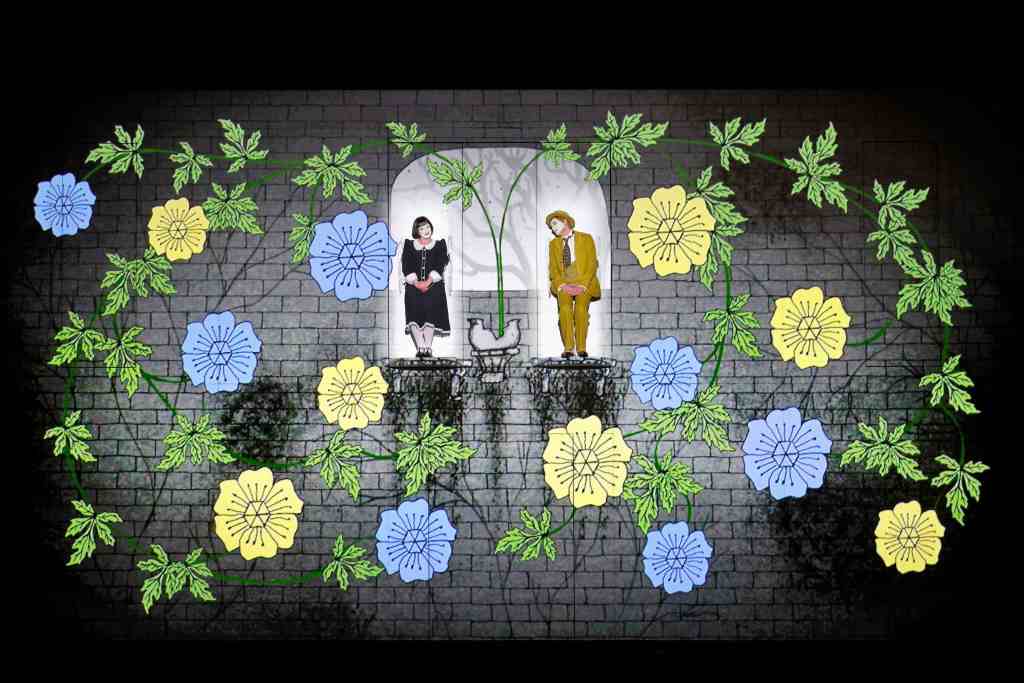

The biggest change is the two dimensional staging, which is set up to fully facilitate the animation which is cued by a dedicated stage manager who oversees 729 different animation cues. Imagine an enormous flat screen TV, with several small openings for the singers, who are perched on various ledges, and these slide shut when they are finished. These singers are essentially anchored in place while images swirl about them in constant motion. This is the exact opposite of what we normally experience. While the tech constrained the singers significantly, the tradeoff, in terms the production’s stunning immersive visual impact, was an immensely enjoyable result. This made me aware of the vital contribution that live singers make to this art form.
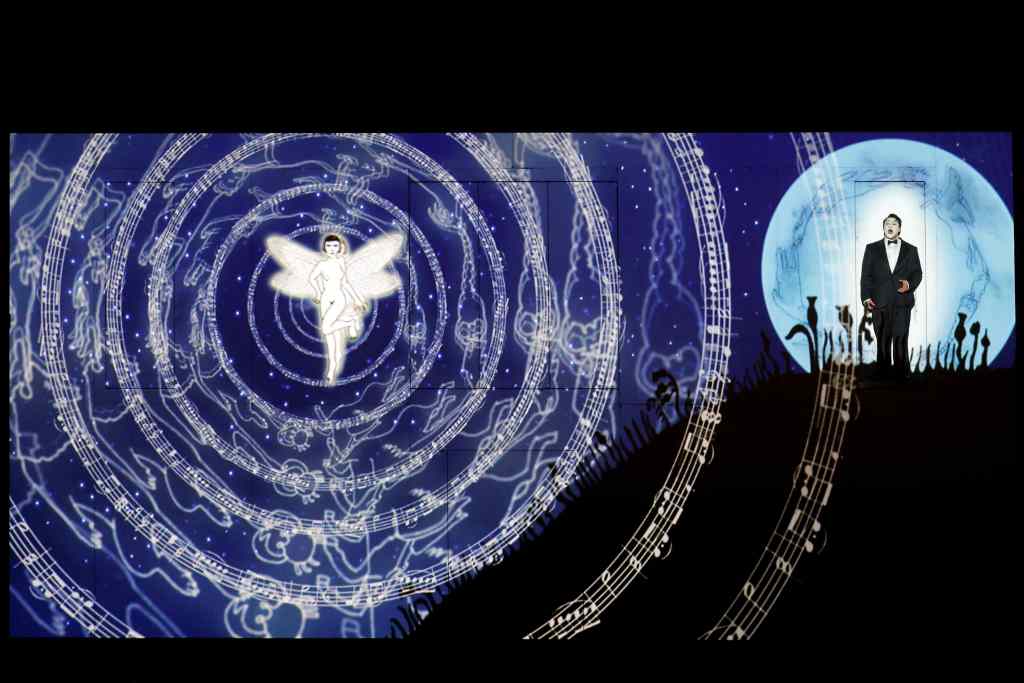
Samoan-born, New Zealand tenor Amitai Pati, as Prince Tamino, was very moving in his Act I Scene 1 aria “Dies Bildnis ist bezaubernd schön” (“This image is enchantingly lovely”) which he sings as the Three Ladies show him a picture of Princess Pamina, the Queen’s daughter, who he promptly falls in love with. He performed the aria with such conviction and tenderness that he was absolutely mesmerizing.
Austrian soprano Christina Gansch as Pamina, with her stylish Louise Brooks bob, sang exquisitely. Gansch (Dorinda, “Orlando” (2019) and Zerlina, “Don Giovanni” (2022)) navigated all sorts of ques seamlessly throughout too. Her character interacts with Papageno, Tamino, the Queen, and Monostatos and each of these encounters requires precision, synchronization with projected animation she can’t see and, when there’s another singer in the scene, coordinating with them as well. And the acting has to be somewhat exaggerated to make sure it stands out from the projections. All of this while singing. It’s regretful there was no press photo available of this being rehearsed. Gansch was impressive in Pamina’s major aria “Ach, ich fühls”/ “Ah, I feel it, it is vanished,” which comes in the middle of Act II, just after her mother has instructed her to stab Sarastro and after she has seen Tamino who was unresponsive when she tried to speak with him. Unaware of the vow of silence he’s taken, she believes he no longer loves her. She sang beautifully with desperation, heartbreak.
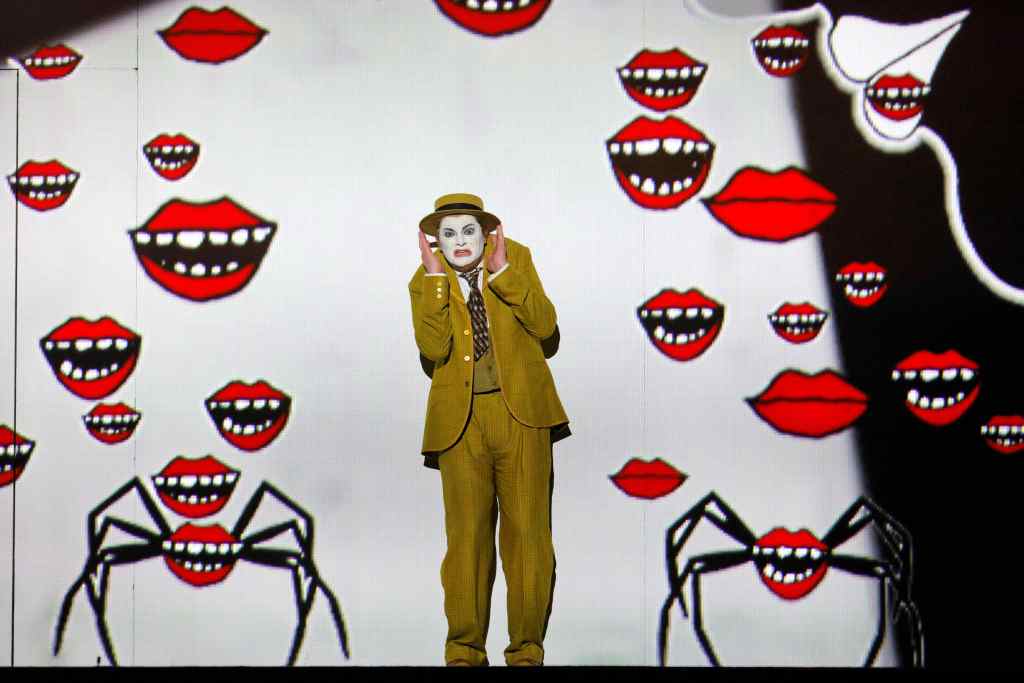
Estonian bass-baritone Lauri Vasar in his North American premiere had the necessary warmth and natural comedic flare to pull off Papageno, the Queen’s dimwitted bird catcher and one of opera’s most beloved characters. He accompanies Tamino on his quest to rescue Pamina from Sarastro and, in a plot twist, they learn it’s Sarastro who is protecting Pamina from her evil mother. His beautifully sung Act I “Ein Mädchen oder Weibchen” (“A girl or little wife”) springs out of his experience in Sarastro’s realm with Prince Tamino. His Act II “Pa-Pa-Pa-Papageno” duet with Papagena, soprano Adrianna Rodriguez in her Company debut, was delightful, both of them embracing the pure fun in the singing and the crowd applauding wildly.
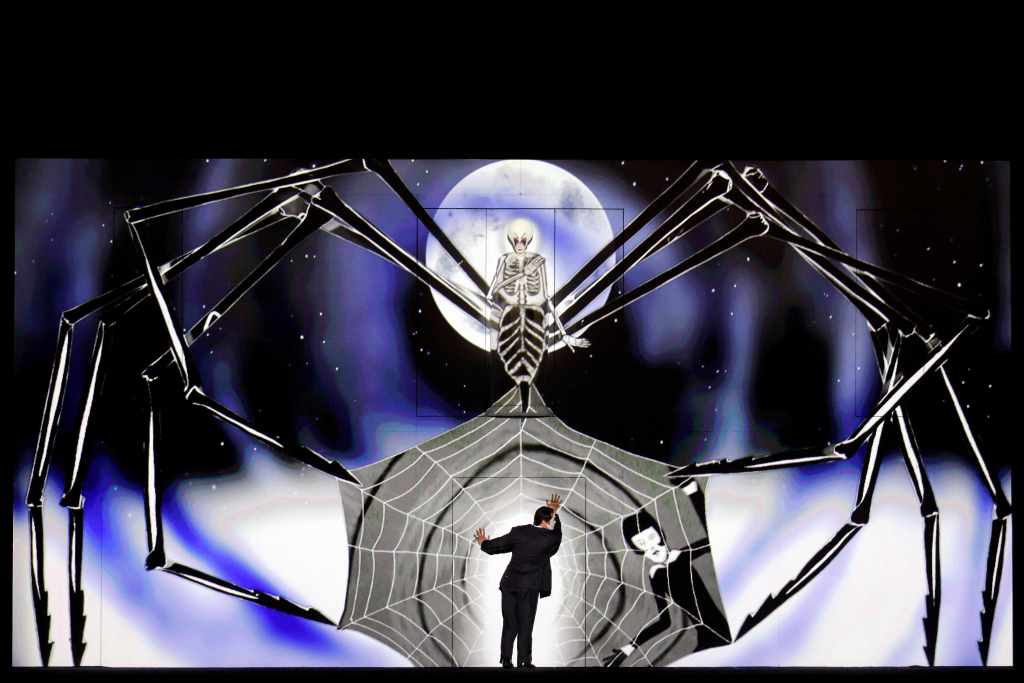
In her Company debut as Queen of the Night, Polish soprano Anna Simińska was the small living head on a huge animated spider who was weaving a web, a deceitful one at that. She enlists Tamino to rescue her daughter from Sarastro and goes on to sing two of opera’s most spectacular arias. She has sung this role to great acclaim all over the world and was spectacular at SF Opera, dispatching the requisite vocal gymnastics with seeming ease.
She sang Act I’s “Zum Leiden bin ich auserkoren”/ “With her my happiness was taken,” tenderly and passionately as she lamented Pamina’s loss. She sailed through the relentlessly paced staccato high notes in Act II’s “Der Hölle Rache kocht in meinem Herzen” /”Hell’s vengeance boils in my heart,” one of opera’s most notoriously difficult arias, projecting explosive fits of rage and drama, largely unseen but heard.

South Korean bass Kwangchul Youn, a distinguished interpreter of Richard Wagner’s music dramas, in his Company debut, sang in a rich deep base, playing the high priest Sarastro with the dignity and aplomb worthy of the enlightened leader. Youn will sing King Marke in “Tristan and Isolde” and in Beethoven’s “Ninth Symphony” in SF Opera’s 2024-25 season.

Chinese tenor Zhengyi Bai, a former Adler and Merola fellow, played Monostatos, Sorastro’s sinister right-hand man with the creepiness befitting the character he was modeled after—Max Schrek’s Count Orlock in F.W. Murneau’s magical 1922, silent era gem “Nosferatu.” With its menacing huge hand-drawn wolf-dogs tethered to Monostatos, the photo above captures the exquisite visual impact of the animation.
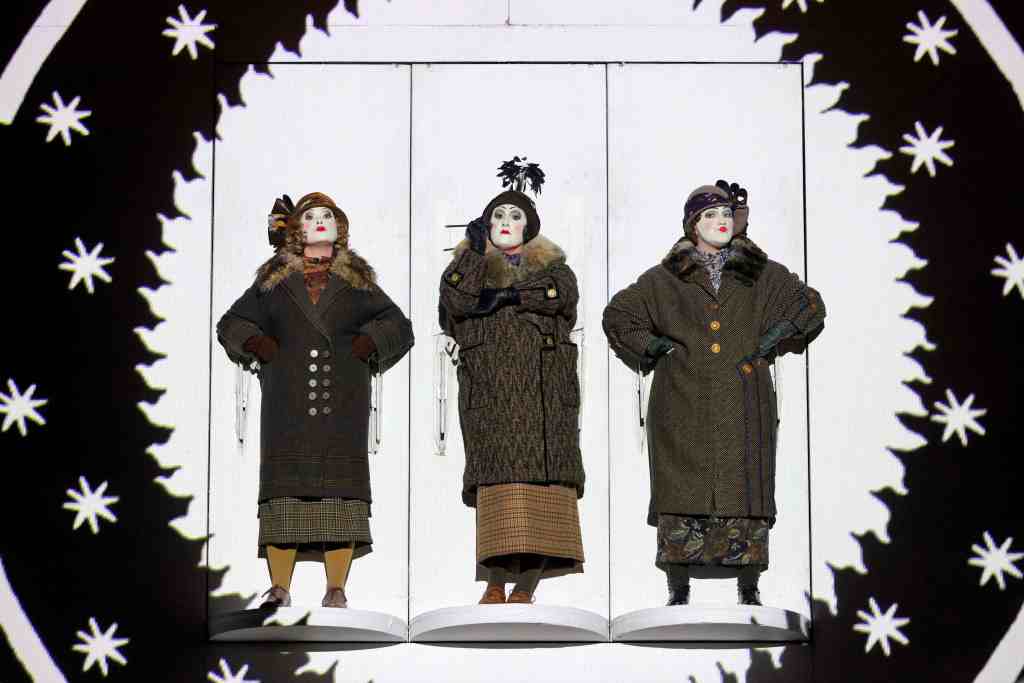
Along with the rest of audience, I was drawn to the triplets. The Three Ladies, the Queens emissaries who materialize above Tamino—current Adler soprano Olivia Smith, mezzo-sopranos Ashley Dixon, a former Adler, and Maire Therese Carmack, in her Company debut—sang harmoniously together and were delightful in their spatting. Perched side by side upon tiny half circle platforms that seemed to float above Tamino, they were visual standouts, dressed in heavy coats suited for winter in Berlin and outfitted with humorous hats and white face Kabuki doll style make-up with pink cheeks, red lips. What seemed like hundreds of animated red roses punctuated their affection for Tamino and they were somewhat outdone by the flurry of animated hearts that literally leapt in at the end of their scene. The other trio, three young boys/guiding spirits (Niko Min, Solah Malik, Jacob Rainow) who are sent to guide Papageno and Tamino on their adventure, all sang angelically too in high treble voices.
Mozart and librettist Schikaneder were both freemasons and the number three figures prominently in the opera, alluding to freemasonry’s emphasis on order and balance. In-depth analysis on the connection with freemasonry and its symbolism is available online but this production tends to focus more on Wiemar era and film associations. In short, the opera’s overture begins with three familiar loud gong-like cords, in the key of Eb major, which has three flats. These chords repeat in the overture and the Act I, where we encounter three ladies. Sarastro’s temple of wisdom has three doors. Following the three trials of Masonic self-discipline, when searching looking for purification, we encounter three young boys.
SF Opera Music Director Eun Sun Kim has conducted “The Magic Flute” with multiple European companies and with Washington National Opera. On Friday, she masterfully and joyfully guided SF Opera Orchestra’s long-awaited return of this masterpiece. From the overture’s thrilling opening cords and familiar stanzas which had a couple behind me humming loudly, the orchestra’s playing was enthralling. Kim kept it bouncing at an energetic pace and everything went off quite smoothly in terms of coordination between the projections, singers, and orchestra. Julie McKenzie was the soloist for Papageno’s delightful solo; Stephanie McNab played the pan flute solos; and Bryndon Hassman played fortepiano featured for the intertitles. Kim will return to Mozart in June 2025 with “Idomeneo,” one of the composer’s earliest operas, after leading Verdi’s “Un Ballo in Maschera,” Wagner’s “Tristan und Isolde,” and Beethoven’s “9th Symphony” this fall. The SF Opera Chorus remained hidden on the sides of the stage, save for a single mass appearance in top hats, but very audible.
Details:
SF Opera’s “The Magic Flute” is sung in German. Run time is 2 hours, 42 min, with one intermission. There are four remaining performances: Thursday, June 20 (7:30 p.m.), Saturday, June 22 (7:30 p.m.), Wednesday 26 (7:30 p.m.) Pride Day, and Sunday, June 30 (2 p.m.) Tickets are selling quickly for remaining performances.
For more information, tickets: https://www.sfopera.com/operas/the-magic-flute/
June 19, 2024 - Posted by genevaanderson | Art, Opera | Amitai Pati, Anna Simińska, Ashley Dixon, Barrie Kosky, Bryndon Hassman, Christina Gansch, Die Zauberflöte, Emmanuel Schikaneder, Eun Sun Kim, F.W. Murneau, Jacob Rainow, John Keene, Julie McKenzie, Kwangchul Youn, Kwangcuhl Youn, Lauri Vasar, Magic Flute, Maire Therese Carmack, Max Schrek, Mozart, Nico Min, Nosferatu, Olivia Smith, Paul Barritt, San Francisco Opera, Schikaneder, SF Opera, SFO Chorus, SFO Orchestra, Solah Malik, Stephanie McNab, Suzanne Andrade, Tobias Ribitski, Zhengyi Bai
No comments yet.
Pages
Categories
- Art (184)
- Asian Art Museum (19)
- Berkeley Art Museum (2)
- California Academy of Sciences (1)
- de Young Museum (22)
- Legion of Honor (18)
- Oakland Museum of California (10)
- Petaluma Arts Council (9)
- SFMOMA (24)
- Sonoma County Museum (5)
- Book (5)
- Chamber Music (14)
- Classical Music (53)
- Dance (19)
- Film (212)
- Food (70)
- Gardening (11)
- Green Music Center (23)
- Jazz Music (8)
- Opera (95)
- Photography (3)
- Symphony (23)
- television (1)
- Theater (2)
- Theatre (91)
- Uncategorized (6)
- Wine (10)
- Art (184)
Recent Comments
- Karen Petersen on SFO’s “Dialogues of the Carmelites”―an opera of faith, with inspiring conversations sung to beautiful music―through Sunday, October 30
- Review: San Francisco Opera’s “Hansel and Gretel”—happily ever after, with adult moments « ARThound on Meet Richard Savino, whose baroque instruments add period splendor to Handel’s “Orlando,” at SF Opera through June 27
- Karen Petersen on Meet Drogen, the unflappable equine star of SF Opera’s “Carmen”—he’s from Penngrove and is a rare Gyspy Vanner
- linda anderson on Meet Richard Savino, whose baroque instruments add period splendor to Handel’s “Orlando,” at SF Opera through June 27
- Zoe Tennant on Meet Richard Savino, whose baroque instruments add period splendor to Handel’s “Orlando,” at SF Opera through June 27
Archives
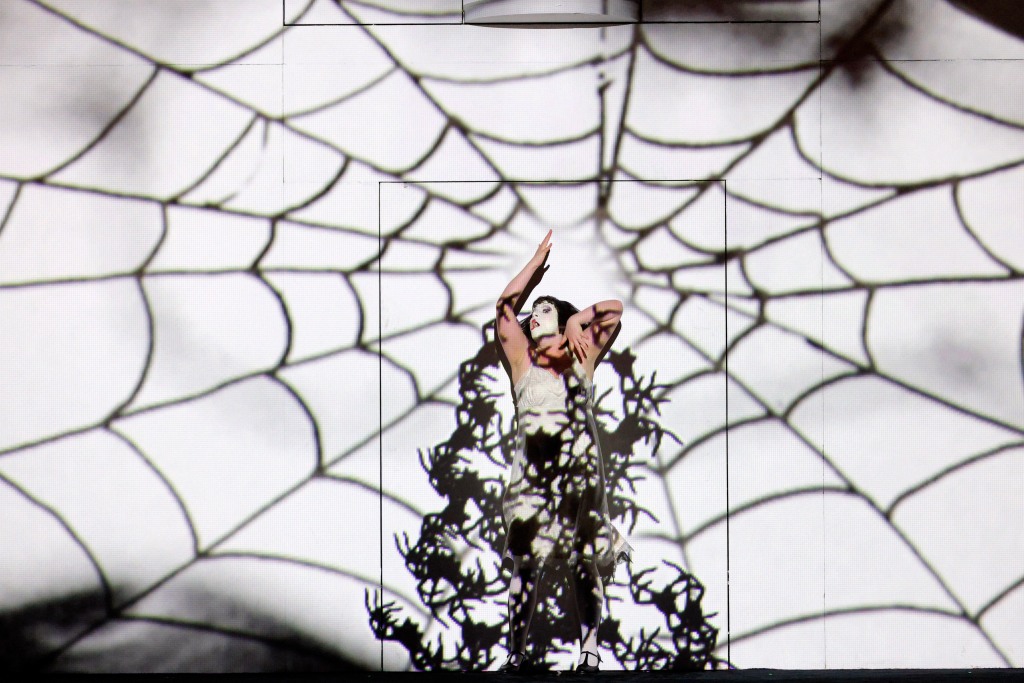
Leave a comment